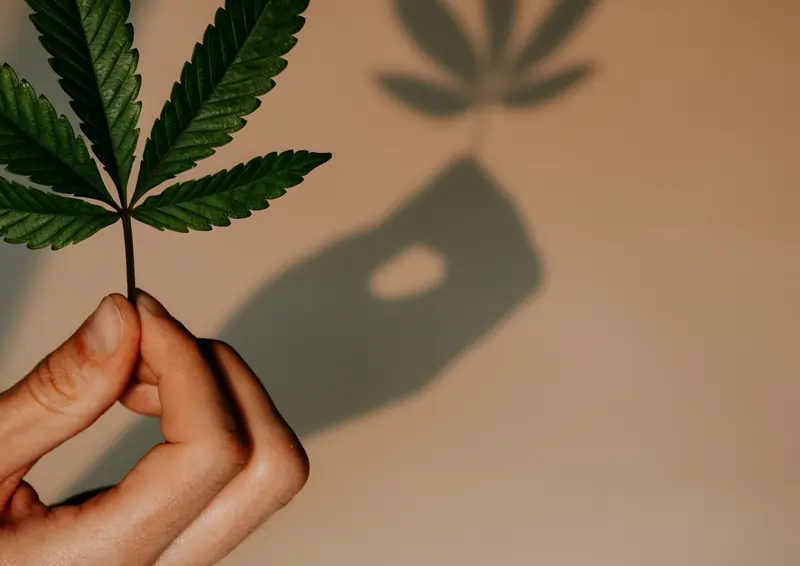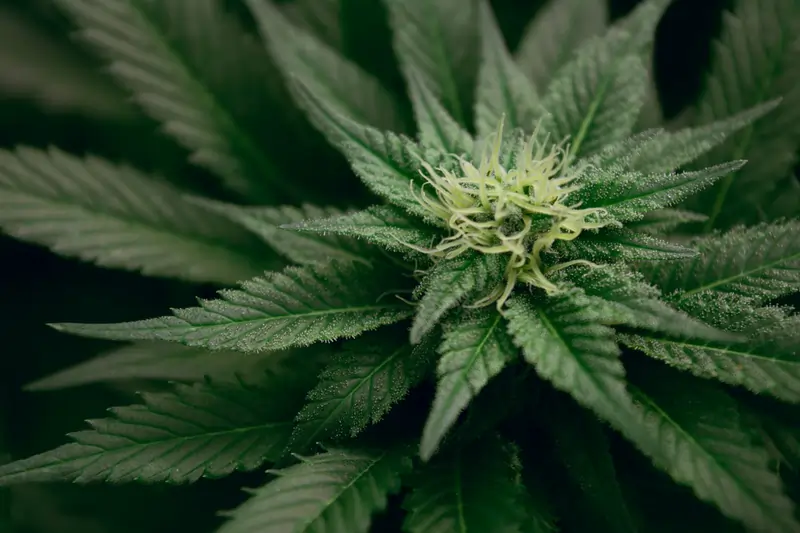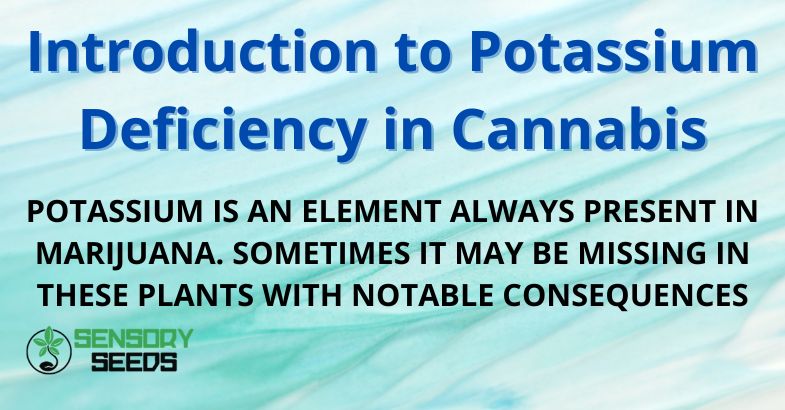Published on: 30/03/2024
POTASSIUM IS AN ELEMENT ALWAYS PRESENT IN MARIJUANA. SOMETIMES IT MAY BE MISSING IN THESE PLANTS WITH NOTABLE CONSEQUENCES
Potassium (K) is a crucial macronutrient in cannabis, essential for the well-being and optimal development of plants. This nutritional element plays an important role in a series of vital physiological processes: photosynthesis, water regulation, nutrient transport, protein and starch synthesis. Potassium, in other words, “harmonizes” the vital functions of the plant, ensuring that each component works in synergy for the success of vegetative growth and flowering.
When cannabis plants have potassium deficiency, which can be caused by substrate imbalances, poor fertilizer management, and suboptimal pH conditions, the overall health of the plant can be compromised, impacting the quality and quantity of the harvest.
Quickly recognizing the signs of a potassium deficiency and taking corrective measures is essential to maintaining plant vitality and maximizing yields.
Causes of Potassium Deficiency
Potassium deficiency in cannabis plants can be caused by a complexity of factors, which must be identified to prevent and correct this nutritional imbalance. The lack of this essential macronutrient, despite its abundance in natural soil, is often the result of suboptimal growing conditions that limit its absorption by the roots.
First of all, an insufficient availability of potassium in the substrate can be the direct consequence of poor soil management or the use of poor quality soil. Paradoxically, excess fertilizer can also induce a deficiency, generating a phenomenon known as “nutrient lockout”, where the overabundance of other elements prevents the absorption of potassium.
The pH of the substrate plays a crucial role. The ability of roots to absorb potassium, in fact, is influenced by the pH range in which they are found. A non-optimal pH can limit the availability of this nutrient, regardless of its presence in the substrate.
Environmental conditions, such as high temperatures and intense lighting, can increase plants’ need for potassium to support transpiration and photosynthesis processes: if potassium is not supplemented in sufficient quantities, plants can quickly show symptoms of deficiency.
Recognizing the root causes of potassium deficiency in cannabis is the first step in creating an optimal growing environment. Through careful substrate management, calibration of fertilizer use, pH adjustment and modulation of environmental exposure, professional growers can prevent potassium deficiency, safeguarding the health of their plants and ensuring their productivity.
Read also: Why does cannabis cause red eyes?
Symptoms can also extend to the stems, stalks and buds, which elongate unevenly, appearing stunted and deformed. In some cases, plants affected by potassium deficiency can develop red streaks along the stems, a further indicator of deficiency.
It is important to distinguish potassium deficiency from other nutritional problems that have similar symptoms. Nutrient burn, for example, can cause similar yellowing along the tips of leaves, but does not lead to the development of the brown and yellow necrotic spots typical of potassium deficiency.
Recognizing the signs of different problems allows you to treat your plants in a targeted way, minimizing the impact on production and ensuring healthy growth from the moment you plant autoflowering seeds or feminized seeds. Knowing the symptoms of potassium deficiency is important for every grower who wants to achieve satisfactory harvests.


What causes potassium deficiency
Potassium deficiency in cannabis (coming from marijuana seeds) is more than an inconvenience: it is a serious threat that can profoundly compromise the vitality, productivity and quality of plants. Potassium enters into numerous physiological processes, from the regulation of water and photosynthesis to disease resistance and plant structural strength. Its lack can have long-term consequences that can extend far beyond a single cultivation cycle.
As mentioned, potassium deficiency compromises the plant’s ability to transport water and nutrients through the vascular system: the artificial water deficit leads to a reduction in photosynthesis and the energy available for growth and development.
In the absence of adequate amounts of potassium, the strength of stems and branches decreases, increasing the risk of physical damage and inadequate support for the buds during the flowering phase: the plants thus appear visibly wilted and debilitated.
The consequences also extend to disease resistance and environmental conditions. Potassium is essential for activating plants’ natural defenses against pathogens and abiotic stress; consequently, a deficiency can make plants more susceptible to diseases and harmful changes in temperature and humidity.
From a production point of view, potassium deficiency can decrease the quality and quantity of the crop. Bud formation is influenced by the availability of this nutrient: Potassium-deficient plants often produce smaller, lower-quality flowers. This negatively impacts the final yield and can also reduce the commercial value of the production due to the decrease in the levels of cannabinoids and terpenes in cannabis.
Potassium deficiency is therefore a significant problem for the professional cannabis grower, with effects that can vary from stunted growth to a significant loss of production and quality. Understanding the causes, correctly interpreting the symptoms and adopting treatment strategies is essential to prevent and mitigate these negative effects, thus ensuring the health and prosperity of crops.
How to remedy potassium deficiency in cannabis
Remedying potassium deficiency in cannabis crops requires a proactive approach, focused on prevention and timely corrective interventions. Recognizing the signs and understanding the causes of deficiency allows growers to take measures that safeguard plant health and optimize yields.
Prevention begins with correct substrate management and fertilizer balance. Ensuring that the soil is rich in potassium and that the pH is maintained within an optimal range (generally between 6.0 and 7.0 for soil cultivation) is essential to facilitate nutrient absorption. Using a balanced fertilizer, designed specifically for cannabis from cannabis seeds and including an adequate proportion of potassium, is essential to prevent deficiencies. Furthermore, avoiding excessive use of fertilizers which can lead to nutrient lockout, preventing plants from absorbing available potassium, is a key principle of prevention.
Before intervening, it is best to make sure that the symptoms observed are due to potassium deficiency and not to other nutritional deficiencies or health problems of the plant. An accurate diagnosis may require soil or leaf analysis to confirm the problem.
Once a deficiency is confirmed, immediate treatment may include the application of a potassium supplement, in the form of potassium sulfate or potassium chloride, which helps quickly restore adequate levels of this essential nutrient. It is important to avoid overdose, which can be equally harmful.
Additionally, adjusting the pH of the substrate, when necessary, can significantly improve the efficiency of potassium uptake. If the potassium deficiency has been caused by nutrient lockout due to over-fertilization, a thorough washing of the soil or substrate may be necessary to remove excess mineral salts and restore nutrient balance .
Once the deficiency has been corrected, monitoring the plants frequently is essential to ensure that symptoms do not recur: regularly checking pH and nutrient levels in the substrate, as well as carefully observing plant development for signs of stress or new deficiencies prevent any problems from degenerating.
Read also: What’s inside hashish (even legal). Everything you need to know
How to manage excess potassium
Managing excess potassium in cannabis plants requires professional growers to pay special attention, since, although less common than deficiencies, it can lead to equally serious consequences for the health of the plant and the quality of the harvest. An excess of potassium can in fact interfere with the absorption of other essential nutrients, such as calcium, magnesium and iron, causing a cascade of nutritional imbalances.
Signs of excess potassium manifest themselves with darkening of the leaves, accompanied by symptoms of deficiencies of other nutrients due to competition for absorption. Correctly identifying the problem often requires analysis of the substrate and plant tissue to confirm elevated potassium levels.
Once excess potassium has been diagnosed, the next step is to reduce, or eliminate, the intake of potassium-containing fertilizers. This will help prevent further accumulation as the plant uses the potassium already present in the substrate.
Root flushing is another effective technique for rapidly reducing potassium levels in the substrate: watering the substrate with a significant volume of water, approximately three times the capacity of the container, “washes away” excess salts minerals, including potassium. It is a procedure that requires caution, as it can stress the plant and also remove useful nutrients.
After washing the roots, it is important to replenish any nutrients that may have been leached out along with the excess potassium. Using a complete and balanced fertilizer, complete with macronutrients and micronutrients, can help restore nutritional balance in the root zone.
After addressing excess potassium, nutrient and pH levels should be carefully monitored to prevent future accumulation.
To avoid excess potassium, a balanced growing environment is necessary, which is key to ensuring the health and productivity of cannabis crops.


In conclusion
Potassium deficiency is a potentially serious problem, which can be avoided by careful fertilization and care of your cannabis plants.
Prevention through proper substrate management, adequate fertilizer balancing, and pH regulation are part of an effective strategy to keep plants healthy and productive. However, when problems of deficiency or excess arise, intervening quickly with corrective measures based on an accurate diagnosis is essential to minimize the impact on growth and harvest.
The cultivation of cannabis, with its specific nutritional needs, teaches that, in addition to the science of fertigation, a grower must also know how to read and “respond” to the signs expressed by the plants.
The goal of every professional grower should be to establish a growing environment that promotes not only plant health and vigor but also the sustainability of the growing ecosystem. This requires a continuous commitment to learning, adaptation and innovation, with an eye always turned to the quality of the harvest and the environmental impact of cultivation practices.
Through the adoption of informed and responsible practices, the cultivation of legal cannabis can continue to thrive, offering abundant and high-quality harvests, while respecting the environment and biodiversity.
If you are a truly passionate collector, don’t miss our cannabis seeds online: you will give prestige to your collection with unique and high quality products!
Takeaways
Importance of Potassium: Potassium is essential for the health and optimal development of cannabis plants, influencing vital processes such as photosynthesis, water regulation, nutrient transport, and the synthesis of proteins and starches. Its deficiency can seriously compromise vegetative growth and flowering.
Causes of Deficiency: Potassium deficiency can result from inadequate substrate management, excessive use of fertilizers, suboptimal pH conditions, and insufficient availability of potassium in the soil. These factors limit the absorption of potassium, essential for the health of the plant.
Symptom Recognition and Intervention: Early identification of symptoms of potassium deficiency, such as leaf discoloration, apparent dehydration, and impaired photosynthesis, is crucial. Timely intervention with corrective measures can safeguard plant vitality and optimize yields.
Management of Potassium Deficiency and Excess: A proactive approach that includes proper substrate management, fertilizer balance, and pH regulation is critical to preventing deficiency. If there is excess, reducing potassium intake and potentially performing a radical flush can help restore nutrient balance.
Prevention and Responsible Cultivation Practices: Prevention through careful management and the use of balanced cannabis-specific fertilizers are essential to keeping plants healthy and productive. Carefully monitoring the plants and their growth environment allows you to intervene promptly in case of problems, reducing the impact on growth and harvest.
Frequent questions
Why is potassium so important for cannabis?
Potassium (K) is a crucial macronutrient for cannabis, essential for the well-being and optimal development of plants. By influencing vital processes such as photosynthesis, water regulation, nutrient transport, and the synthesis of proteins and starches, potassium harmonizes the vital functions of the plant, promoting vegetative growth and flowering.
How do you recognize the symptoms of potassium deficiency in cannabis?
Symptoms of potassium deficiency in cannabis include discoloration of leaves, with tips and edges turning yellow and brown, necrotic brown spots on the surface of leaves, veins that remain green, apparent dehydration despite adequate watering conditions, impaired photosynthesis , and stunted development and deformities in stems, stalks, and buds.
How can potassium deficiency in cannabis be remedied?
To remedy potassium deficiency in cannabis growing up from weed seeds, it is essential to take a proactive approach that includes proper substrate management, fertilizer balance and pH adjustment.









